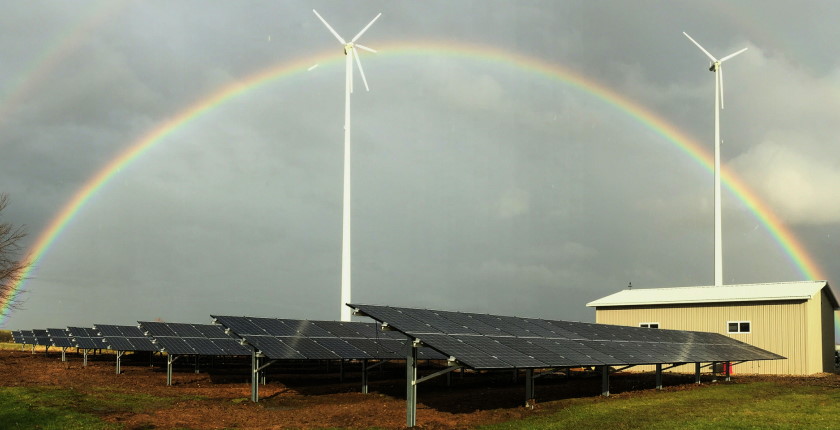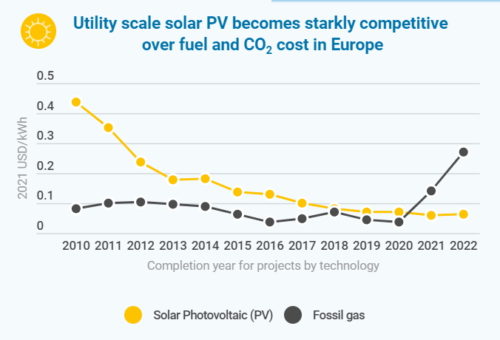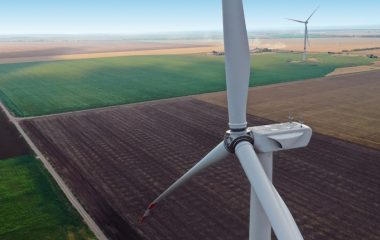
Photo: Whitney Beadle / United States Government Work
Costs for renewables continued to fall last year as supply chain challenges and rising commodity prices have yet to show their full impact on project costs, IRENA said. The cost of electricity from onshore wind fell by 15%, compared to 13% for offshore wind and 13% for photovoltaics.
The Renewable Power Generation Costs in 2021 report, published by the International Renewable Energy Agency (IRENA), shows almost two thirds or 163 GW of newly installed renewable power in 2021 had lower costs than the cheapest coal-fired option within the Group of Twenty major and emerging economies – G20.
The organization estimates that, given the current high fossil fuel prices, the renewable power added last year would save USD 55 billion from energy generation costs in 2022. Solar and wind energy, with their relatively short project lead times, represent vital planks in efforts to swiftly reduce and eventually phase out fossil fuels and limit the macroeconomic damages they cause in pursuit of net zero, it pointed out.
La Camera: While a temporary crisis response might be necessary in the current situation, excuses to soften climate goals will not hold mid-to-long-term
“Renewables are by far the cheapest form of power… Renewable power frees economies from volatile fossil fuel prices and imports, curbs energy costs and enhances market resilience – even more so if today’s energy crunch continues. While a temporary crisis response might be necessary in the current situation, excuses to soften climate goals will not hold mid- to long-term,” IRENA’s Director-General Francesco La Camera said.
Fossil fuel, CO2 price surge makes renewables even more competitive
High coal and fossil gas prices will also profoundly deteriorate the competitiveness of fossil fuels and make solar and wind even more attractive, according to the document. With an unprecedented price surge in Europe, new fossil gas generation will increasingly become uneconomic over its lifetime, increasing the risk of stranded assets, the authors stressed.
If material costs remain elevated, price pressures will be more pronounced and overall costs for renewables may rise
As to supply chains, IRENA’s data suggests that not all materials cost increases have been passed through into equipment prices and project costs yet. If material costs remain elevated, price pressures will be more pronounced and overall costs may rise, the agency added. Increases might however be dwarfed by the overall gains of cost-competitive renewables in comparison to higher fossil fuel prices, its projections reveal.

Utility-scale solar power saw biggest drop in costs since 2010
The global weighted average levelized cost of electricity (LCOE) of onshore wind projects added in 2021 fell by 15% year on year to USD 0.033 per kWh, while that of new utility-scale PV sunk 13% to USD 0.048 per kWh and that of offshore wind declined 13% to USD 0.075 per kWh. With only one concentrated solar power (CSP) plant commissioned, LCOE rose 7% in the segment on an annual basis, to USD 0.114 per kWh.
Hybrid power plants, storage, virtual power plants and other innovations can transform the nature of variable renewable technologies
The global weighted average LCOE of newly commissioned utility‑scale PV projects declined by 88% between 2010 and 2021, while that of onshore wind fell by 68%, compared to a drop of 68% for CSP and 60% for offshore wind.
The sums take inflation and the cost of operation and maintenance into account. However, LCOE excludes balancing costs, subsidies and the benefit of having of storage facilities integrated with a renewable energy unit and the ability to provide ancillary grid services. Hybrid power plants, with storage or other renewable power generation technologies, along with the creation of virtual power plants that mix generating technologies, can all transform the nature of variable renewable technologies, IRENA said.
Renewable energy developers connected 257 GW to the grid last year or 3% less than in 2020, but 41% more than one year before. The capacity includes biomass plants, geothermal and hydropower. China kept its number one spot with 29 GW, followed by Brazil, Vietnam, and Sweden. Turkey was fifth in 2021, with 1.8 GW.









Be the first one to comment on this article.